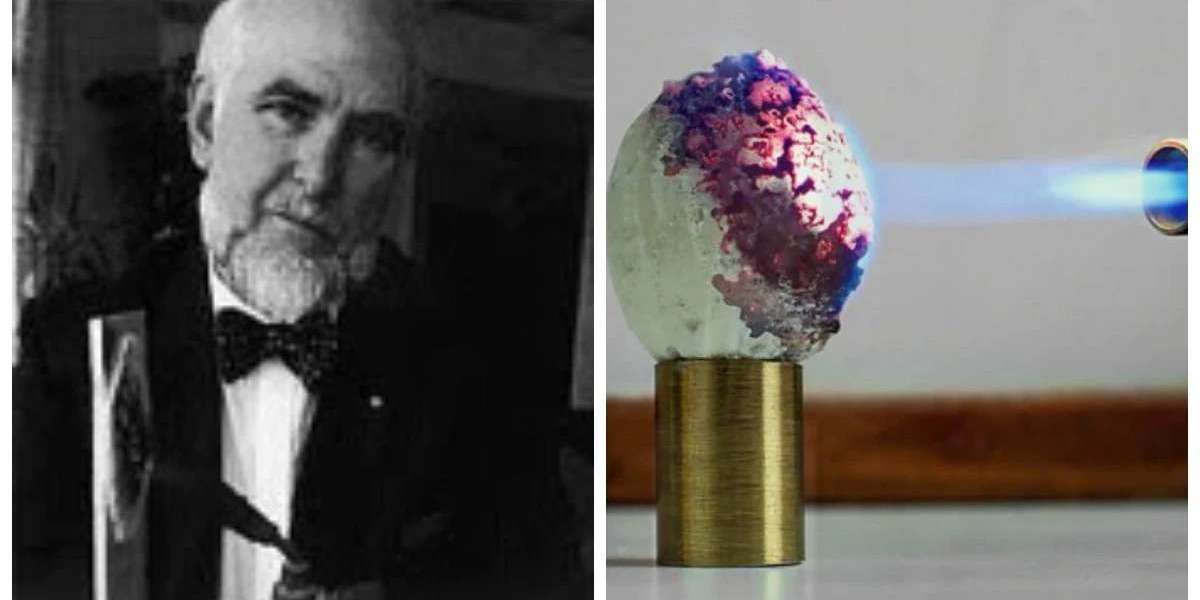In the world of science and innovation, discoveries often emerge from universities, labs, and multi-million-dollar research facilities. But sometimes, history throws us a wild card—like Maurice Ward, a British hairdresser who, in the 1980s, stunned the scientific community with a material so revolutionary it was said to withstand temperatures from a nuclear blast. That material was called Starlite, and its story is one of brilliance, secrecy, frustration, and mystery.
Who Was Maurice Ward?
Maurice Ward wasn’t a chemist, physicist, or materials engineer. He was a self-taught inventor and former hairdresser from Yorkshire, England. After witnessing the tragic 1985 Manchester Airport disaster, where 55 people died—many from toxic smoke and heat—Ward became obsessed with creating a material that could resist extreme heat and prevent similar catastrophes.
Driven by personal passion and a deep curiosity, he began experimenting with plastics, polymers, and unconventional compounds at home. His research was guided by intuition rather than formal education, and it led to the invention of Starlite, a substance that would later captivate the attention of NASA, the British Ministry of Defence, and media worldwide.
What Is Starlite?
Starlite is a lightweight, white, putty-like composite material. What made it so remarkable was its alleged ability to:
Withstand temperatures up to 10,000°C (18,000°F)
Reflect and insulate heat
Prevent objects behind it from being damaged or burned
Remain structurally intact during intense thermal exposure
Starlite became a scientific curiosity because it did not burn, explode, or degrade even under intense conditions. Tests reportedly showed it could protect an egg from a blowtorch flame—leaving the inside of the egg still raw. That famous demonstration aired on BBC’s "Tomorrow’s World" in the early 1990s and brought Starlite to public attention.
You can watch one version of the egg test here (archived video footage).
Was It Really Nuclear Blast-Resistant?
Claims that Starlite could survive a nuclear blast stem largely from anecdotal evidence. According to Ward and some media reports, military and aerospace tests confirmed Starlite’s performance under simulated nuclear-level heat.
British Atomic Weapons Establishment allegedly tested it against high-level laser and plasma sources.
NASA showed interest and supposedly tested its resistance to extreme reentry temperatures.
BAE Systems and other defense contractors expressed interest.
However, due to lack of peer-reviewed publications and public data, these claims remain unverified by the broader scientific community.
Why Didn’t It Go Mainstream?
Maurice Ward refused to patent Starlite. He was afraid that if he revealed the formula, it would be stolen or reverse-engineered by corporations or governments. He insisted on retaining 51% ownership in any potential partnership, which discouraged many companies from moving forward.
He once said:
“It’s no good making something if you just sell it off and someone else gets the benefit.”
His distrust of corporate greed and desire to protect his legacy meant that Starlite remained largely uncommercialized during his lifetime.
After Maurice Ward died in 2011, he reportedly left the formula to his family, but no confirmed reproductions have since surfaced.
Was Starlite Ever Reverse-Engineered?
Since Ward’s death, several scientists and engineers have attempted to recreate Starlite, based on the few known properties:
It likely contained thermoplastic polymers, ceramics, and possibly boron compounds.
Some open-source enthusiasts and materials researchers have developed “Starlite-like” materials but none have matched the performance claims seen on BBC or alleged military tests.
Because the true formulation remains secret, the original Starlite is effectively lost—a modern mystery that may never be solved.
FAQ: Maurice Ward and Starlite
Q1: Was Maurice Ward a real person?
Yes. Maurice Ward was a British hairdresser and self-taught inventor who lived in Yorkshire and passed away in 2011.
Q2: What made Starlite so special?
Its alleged ability to resist temperatures exceeding 10,000°C, insulating objects from heat without degrading or combusting.
Q3: Is there any proof it could survive a nuclear blast?
While Starlite was reportedly tested by defense agencies and withstood extreme heat, no public, peer-reviewed data confirms it could survive an actual nuclear explosion.
Q4: Why wasn’t it commercialized?
Ward refused to share the formula without strict ownership conditions, fearing exploitation. This halted most serious deals.
Q5: Can anyone make Starlite today?
Not exactly. Though imitations have been attempted, the exact original formula remains unknown and unreproduced.








